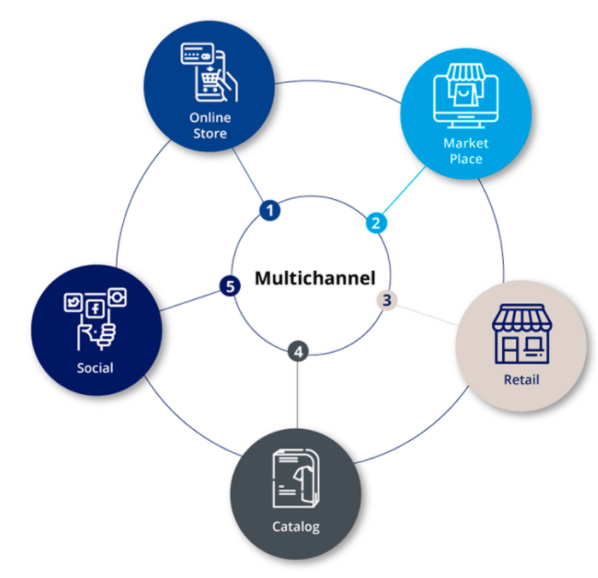Business Builder/Retailer (1 years course)
Business Builder/Retailer click here
Brief Job Description
Individual in this position also known as Retail Store Owner / Team Leader of a Direct Sales Team. He/ She
is the primary or sole operator for the business who employs / engages others for daily operations. In case of direct selling, the individual manages a team and is responsible for selling of goods to consumers away from the fixed retail outlet either from home or any other non-store location.

Personal Attributes
The individual needs to be physically fit to be able to fulfil tasks efficiently and be mentally balanced to be
able to motivate self to deal with unexpected situations, if any. He/she should also have product/service
knowledge, business acumen, customer service skills and people management skills.
Build relationship with vendors / dealers to ensure smooth business operations and increase sales
Description
This unit deals in building relationships with vendors/dealers.
Elements and Performance Criteria
Build and manage networks with vendors and dealers
To be competent, the user/individual on the job must be able to:
PC1. communicate clearly in the required local language
PC2. articulate clearly and coherently
PC3. respond appropriately
Establish trust and confidence in vendors and partners
To be competent, the user/individual on the job must be able to:
PC4. identify where to get help and information from
PC5. understand what is required from specific vendors
PC6. express need clearly and get into workable relationship with vendor/s
PC7. negotiate with vendors for better deal
PC8. ensure proper contracting with vendors
PC9. ensure minimisation of possible risks and losses in vendor relationships
PC10. understand best practices and maintain cordial relationships
Knowledge and Understanding (KU)
The individual on the job needs to know and understand:
KU1. vendors and ways to connect with them
KU2. local language
KU3. basic offerings by vendors elsewhere
Generic Skills (GS)
User/individual on the job needs to know how to:
GS1. complete documentation accurately
GS2. collate simple data when required
GS3. read information accurately
GS4. read and interpret data sheets
GS5. use gestures or simple words to communicate where language barriers exist
GS6. use questioning to minimize misunderstandings
GS7. display courteous and helpful behavior at all times
GS8. make appropriate decisions regarding the responsibilities of the job role
GS9. plan and organize service feedback files/documents
GS10. schedule daily activities and draw up priorities; allocate start times, estimate completion
times, materials, equipment and assistance required for completion
GS11. build customer relationships and use customer centric approach
GS12. identify problems immediately and take up solutions quickly to resolve delays
GS13. think through the problem, evaluate the possible solution(s) and adopt an optimum /best
possible solution(s)
GS14. data interpretation and its inference
GS15. how to break down complex problems into single and manageable components within his/her
area of work
GS16. apply, analyze, and evaluate the information gathered from observation, experience,
reasoning, or communication, as a guide to thought and action
Meet health and safety requirements at place of work
Description
This unit deals in building awareness and implementing overall basic hygiene factors and understanding
emergency related procedure at the workplace.
Elements and Performance Criteria
Implementing overall basic hygiene factors and understanding emergency related procedures
To be competent, the user/individual on the job must be able to:
PC1. wash hands with clean water and soap in order to keep them clean at all times
PC2. wear clean and washed clothes every day
PC3. be presentable and well groomed to service customers of all types
PC4. use separate and clean handkerchief/cloth for wiping off perspiration or dust
PC5. keep the cleaning aids dry and clean
PC6. avoid sneezing or coughing around the area of work
PC7. sweep the surrounding area to create a tidy atmosphere

PC8. drain out or dry off any accumulation of stale water in the form of small pools, etc., which
can be breeding ground for mosquitoes
PC9. use government approved disposal stations or appropriately large waste bins to store and
dispose-off collected waste
PC10. advise customers to throw waste at designated bins or waste areas
PC11. prevent development of clean areas into unauthorised waste dump yards over time, in
coordination with co-vendors
PC12. describe ways and means to handle emergency situations like fire, robbery, riots etc.
PC13. describe ways and means to mitigate risks to people and property during emergencies
Disposing of waste safely
To be competent, the user/individual on the job must be able to:
PC14. avoid locating the vending cart near heaps of dumped industrial or food waste with pests
around
PC15. ensure that all waste is collected and disposed-off safely at the end of the day at the nearest
waste disposal station
PC16. ensure that waste water is drained-off in closed drains or in a designated way
PC17. describe other ways to maintain cleanliness. Not to litter and dump waste in an unauthorized
area
Taking precautionary measures to avoid work hazards
To be competent, the user/individual on the job must be able to:
PC18. understand the various work hazards
PC19. take necessary steps to eliminate or minimize hazards
PC20. describe the causes of accidents at the workplace and identify measures to prevent such
accidents from taking place
PC21. take preventive measures to avoid risk of burns and other injury
Following standard safety procedure
To be competent, the user/individual on the job must be able to:
PC22. check and review the storage areas frequently
PC23. stack items in an organized way and use safe lifting techniques to reduce risk of injuries from
handling procedures at the storage areas
PC24. follow health and safety practices for storing, cleaning, and maintaining tools, equipment,
and supplies
PC25. display safety signs at places where necessary for people to be cautious
PC26. adhere to safety standards and ensure no material damage
Knowledge and Understanding (KU)
The individual on the job needs to know and understand:
KU1. legal implications of not implementing health and sanitation requirements
KU2. possible emergencies
KU3. health and sanitation requirements and the importance of the same
KU4. possible losses due to emergency
Generic Skills (GS)
User/individual on the job needs to know how to:
GS1. complete documentation accurately
GS2. collate simple data when required
GS3. read information accurately
GS4. read and interpret data sheets
GS5. use gestures or simple words to communicate where language barriers exist
GS6. use questioning to minimise misunderstandings
GS7. display courteous and helpful behaviour at all times
GS8. make appropriate decisions regarding the responsibilities of the job role
GS9. plan and organize service feedback files/documents
GS10. schedule daily activities and draw up priorities; allocate start times, estimate completion
times, materials, equipment and assistance required for completion
GS11. build customer relationships and use customer centric approach
GS12. identify problems immediately and take up solutions quickly to resolve delays
GS13. think through the problem, evaluate the possible solution(s) and adopt an optimum /best
possible solution(s)
GS14. data interpretation and its inference
GS15. how to break down complex problems into single and manageable components within his/her
area of work

GS16. apply, analyze, and evaluate the information gathered from observation, experience,
reasoning, or communication, as a guide to thought and action
Manage customer needs effectively through need identification and strong customer relationships
Description
This unit deals in sub tasks that ensure enhancing customer satisfaction by identifying needs and building
relationships with customers.
Elements and Performance Criteria
Enhancing customer satisfaction by identifying and catering to their needs and desires
To be competent, the user/individual on the job must be able to:
PC1. identify target customers
PC2. understand and assess target customer need and desire
PC3. identify possible options to satisfy customer need
PC4. present options in an attractive manner that are mutually beneficial in nature
PC5. establish rapport with customers and express genuine interest to clarify customer
requirements and enhance outcomes
PC6. maximise sales opportunities by use of add-on and complementary sales techniques
PC7. provide customer with detailed information about the product/service
Build strong relationships and network
To be competent, the user/individual on the job must be able to:
PC8. build relationships with customers to generate referrals
PC9. collect feedback to improvise to increase business returns and reach
PC10. manage on time delivery service fulfilment
PC11. implement customer loyalty programs like vouchers, promotions
PC12. plan and implement sales presentations
PC13. understand customer complaints and problems and support difficult customers to produce
positive outcome
Knowledge and Understanding (KU)
The individual on the job needs to know and understand:
KU1. the target customer
KU2. acceptable service fulfillment norms
KU3. how to build referrals
KU4. what is a loyalty program
Generic Skills (GS)
User/individual on the job needs to know how to:
GS1. complete documentation accurately
GS2. collate simple data when required
GS3. read information accurately
GS4. read and interpret data sheets
GS5. use gestures or simple words to communicate where language barriers exist
GS6. use questioning to minimise misunderstandings
GS7. display courteous and helpful behaviour at all times
GS8. make appropriate decisions regarding the responsibilities of the job role
GS9. plan and organize service feedback files/documents
GS10. schedule daily activities and draw up priorities; allocate start times, estimate completion
times, materials, equipment and assistance required for completion
GS11. build customer relationships and use customer centric approach
GS12. identify problems immediately and take up solutions quickly to resolve delays
GS13. think through the problem, evaluate the possible solution(s) and adopt an optimum /best
possible solution(s)
GS14. data interpretation and its inference
GS15. how to break down complex problems into single and manageable components within his/her
area of work
GS16. apply, analyze, and evaluate the information gathered from observation, experience,
reasoning, or communication, as a guide to thought and action
Implement legal compliances, policies and procedures
Description
This unit deals in sub tasks that lead to effective implementation of legal compliances, policies and
procedures for managing a business.
Elements and Performance Criteria
Liaison and interact with local corporations and government bodies for smooth conduct of business
To be competent, the user/individual on the job must be able to:
PC1. identify local corporations and government bodies that have a bearing on the
particular business

PC2. identify the contact persons of the particular corporations and government bodies
PC3. interact and maintain relationships with the key persons to ensure smooth
functioning of business
Awareness of self and team on legal compliance, different forms of contracts and agreements, legal
aspects of financial transactions, quality norms and legal requirements with regards to sale of products
and services
To be competent, the user/individual on the job must be able to:
PC4. determine key elements of major legal oversight systems affecting business
operations and follow relevant rules and policies
PC5. compare various issues affecting different forms of contract and agreements
within business operations
PC6. ensure team conformance to the relevant rules and policies for smooth
functioning of business
PC7. describe the concept of minimizing losses and maximizing gains
PC8. articulate legal aspects of financial transactions within business operations
PC9. describe legal requirements for the sale of products and services
PC10. describe various methods of regulating patents and trademarks in local business
environment
Awareness of safety hazards and implement policies and procedures to ensure goods are handled, stored
and transported safely and according to requirements for dangerous and hazardous materials
To be competent, the user/individual on the job must be able to:
PC11. identify and adhere to policies and procedures to ensure goods are handled,
stored and transported safely and according to requirements for dangerous and
hazardous materials
PC12. ensure security checks and balances are conducted to prevent hazards and risks
involved in the business process
PC13. describe ways and means to handle emergencies and mitigate risks
PC14. record, store and transfer information according to legislative and business
requirements
Knowledge and Understanding (KU)
The individual on the job needs to know and understand:
KU1. local corporations/authorities that have a bearing on the particular business
KU2. policies and procedures that have a bearing on the particular business
KU3. legal formalities applicable for the particular business
KU4. knowledge of systems and processes involved in the business
KU5. hazards and risks involved in the business
Generic Skills (GS)
User/individual on the job needs to know how to:
GS1. complete legal documentation accurately
GS2. collate legal data when required
GS3. read legal documentation and related information accurately
GS4. read and interpret agreements, legal documents
GS5. use gestures or simple words to communicate where language barriers exist
GS6. use questioning to minimise misunderstandings
GS7. display courteous and helpful behaviour at all times
GS8. make appropriate decisions regarding related to legal procedures and policies
GS9. prioritize activities and schedule daily activities accordingly; allocate start times, estimate
completion times, documentation, material and assistance required for completion.
GS10. build strong relationships with representatives from local corporations, government
organizations
GS11. identify problems immediately and take up solutions quickly to resolve problems, deviations
and delays
GS12. evaluate the problem, identify possible solution(s) and adopt an optimum /best possible
solution(s)
GS13. interpret data and legal documentation and arrive at inference
GS14. break down complex problems into single and manageable component within the scope of
responsibility
GS15. apply, analyze, and evaluate the information gathered from observation, experience,
reasoning, or communication, as a guide to thought and action
Plan and manage finances to accomplish business objectives
Description
This unit is about understanding and implementation of financial activities critical to business.
Elements and Performance Criteria
Maintain Profit & Loss Accounts
To be competent, the user/individual on the job must be able to:
PC1. describe elements of basic financial accounting
PC2. educate team on conducting basic accounting tasks
PC3. create and maintain accounting reports
PC4. describe sources of profits and causes of losses as reflected in the reports
Negotiate and generate credit from vendors/suppliers
To be competent, the user/individual on the job must be able to:
PC5. assess and interpret information on costs and resource allocation
PC6. instruct team members to actively control costs in their areas of responsibility
PC7. understand the business cycle from accounting point of view
PC8. calculate break-even point and payment schedules
PC9. calculate credit amount and credit period required in order to break even
PC10. define vendor credit cycle to ensure smooth borrowing process
PC11. negotiate with vendor and finalise credit cycle
Plan, monitor and record the cash flow
To be competent, the user/individual on the job must be able to:
PC12. identify credit sources for borrowing of funds
PC13. explain the terms and conditions of sources offering credit
PC14. assess risks involved in borrowing / raising of funds
PC15. select the suitable credit source after evaluation of creditors
PC16. raise additional funds for business expansion
PC17. promptly implement recommendations for improving cost reduction and communicate to
team

Ensure implementation of security procedures with respect to monetary transactions
To be competent, the user/individual on the job must be able to:
PC18. maintain procedures in regard to preparation of budget or target figures
PC19. compare, analyse, document and report budget and actual sales revenue and expenditure
figures, according to budget targets
PC20. identify and describe possible fraudulent activities in monetary and financial transactions
PC21. implement procedures and systems to prevent monetary losses due to fraudulent activities
PC22. implement, monitor and maintain store systems for recording sales figures, revenue and
expenditure
Knowledge and Understanding (KU)
The individual on the job needs to know and understand:
KU1. the importance of error free accounting
KU2. legal implications of erroneous accounting
KU3. reporting forms and formats of the organization
KU4. basic mathematical skills
KU5. elements, specific to business, that need to be considered in accounting
KU6. popular ways of accounting
KU7. risks management while expanding business
KU8. basic of IT systems for accounting purpose
Generic Skills (GS)
User/individual on the job needs to know how to:
GS1. record and update books of accounts
GS2. complete accounting and financial documentation accurately
GS3. collate financial and accounting data when required
GS4. read accounting and financial information accurately
GS5. read and interpret data sheets
GS6. use gestures or simple words to communicate where language barriers exist
GS7. use questioning to minimise misunderstandings
GS8. display courteous and helpful behaviour at all times
GS9. make appropriate decisions regarding financial matters
GS10. plan and organize accounting files/documents
GS11. plan for controlling costs, resource utilization
GS12. manage time to prepare, negotiate and complete budgets
GS13. build relationships with banks, accounting firms and other financial institutions
GS14. identify problems immediately and take up solutions quickly to resolve delays
GS15. think through the problem, evaluate the possible solution(s) and adopt an optimum /best
possible solution(s)
GS16. interpret financial data and arrive at inferences
GS17. break down complex problems related to finance and accounts into single and manageable
components
GS18. apply, analyze, and evaluate the financial information gathered from observation,
experience, reasoning, or communication, as a guide to thought and action
Manage inventory and sales
Description
This unit is about ensuring appropriate market analysis to ensure that the right product is stocked in right
quantities and sold in the correct manner.
Scope
The scope covers the following :
Conduct market analysis to identify customer and plan product assortment/stocks accordingly
Ensure effective management of Inventory and Sales
Elements and Performance Criteria
Conduct market analysis to identify need and plan assortment/stocks accordingly
To be competent, the user/individual on the job must be able to:
PC1. identify target audience/consumer profile
PC2. identify buying patterns and analyse sales data to define assortments and modify them as
per trends observed
PC3. understand competitors/other players/substitute products
PC4. determine means to forecast demands on inventory
PC5. describe the importance for monitoring market trends and technology changes as part of
managing inventory demands
Effective inventory and sales management
To be competent, the user/individual on the job must be able to:
PC6. describe inventory/procuring capacity as per demand
PC7. determine required inventory is on hand
PC8. monitor stock levels and maintain at required levels
PC9. coordinate stocktake or cyclical count
PC10. understand operational costs
PC11. define targets for self and team to achieve business gains
PC12. match logistics of delivery to inventory supply requirements
PC13. calculate profits and margins
PC14. take steps to prevent inventory losses
PC15. plan for contingencies in case of stock out
Knowledge and Understanding (KU)
The individual on the job needs to know and understand:
KU1. products/services involved in the business
KU2. related products/services
KU3. competitors and substitutes
KU4. all costs involved
KU5. possible contingencies
KU6. equipment involved in the business
KU7. calculating various costs
KU8. possible sources of losses






